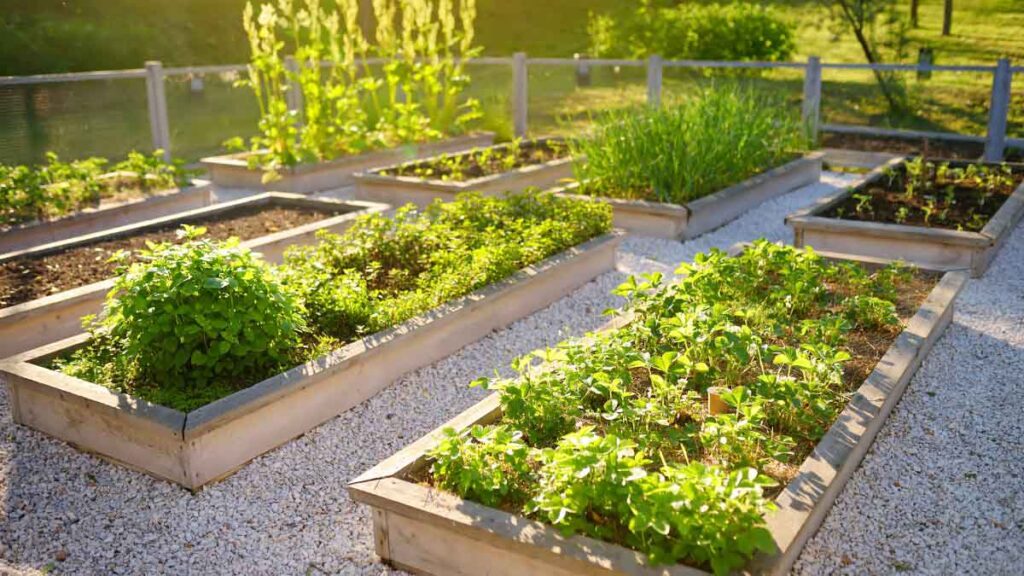Birdies Raised Beds provide durable and customizable gardening solutions for easy and efficient cultivation. Are you looking for a reliable and versatile option for your gardening needs?
Look no further than Birdies Raised Beds. Whether you are a beginner or an experienced gardener, Birdies Raised Beds offer the perfect solution to grow your plants, flowers, or vegetables with ease. These durable and customizable beds are built to last and can be easily assembled to fit any space.
With Birdies Raised Beds, you can create a beautiful and productive garden without the hassle and backache of traditional gardening. Say goodbye to bending down and kneeling on the ground – Birdies Raised Beds elevate your gardening experience and allow you to enjoy the benefits of a thriving garden.
Why Choose Birdies Raised Beds?
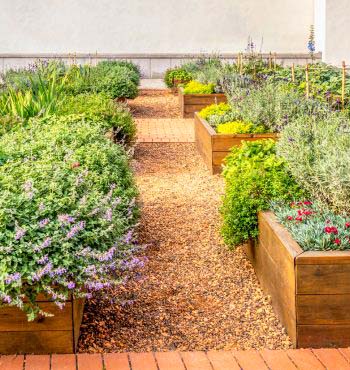
Birdies Raised Beds offers the perfect solution for gardeners looking to elevate their plants. With a sturdy and durable design, these raised beds provide excellent drainage and airflow for healthier, more productive gardens. Choose Birdies for quality and convenience in gardening.
Durability And Longevity
Birdies Raised Beds offer unparalleled durability and longevity.
The beds are constructed using galvanized steel, which provides exceptional strength and rust resistance.
The galvanized steel material ensures that the beds can withstand harsh weather conditions, preventing any warping or cracking.
With their robust construction, Birdies Raised Beds are engineered to last for years, providing a sturdy foundation for your plants.
Versatility And Customization
One of the key advantages of Birdies Raised Beds is their versatility and customization options.
These beds come in a variety of shapes, sizes, and heights, allowing you to find the perfect fit for your gardening needs.
Whether you have limited space or a sprawling garden, Birdies Raised Beds can be customized to suit your requirements.
Additionally, they are easily stackable, enabling you to create multi-tiered gardens or raised bed configurations that suit your style.
With endless possibilities, you can create a garden that is as unique as you are!
Ease Of Assembly And Installation
Birdies Raised Beds take the hassle out of gardening with their easy assembly and installation process.
Each bed comes with pre-drilled holes and straightforward instructions,
making assembly a breeze, even for those with limited DIY experience.
No special tools are required, saving you time and effort.
You can have your raised bed ready for planting in no time, allowing you to focus on what really matters – growing your plants!
Getting Started With Raised Bed Gardening
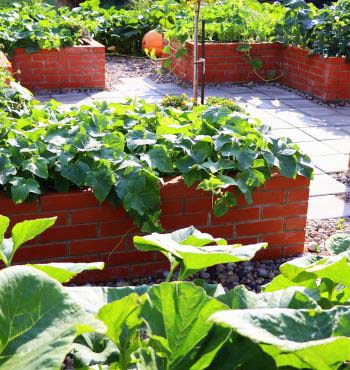
Are you ready to take your gardening to new heights? Raised bed gardening is a popular and efficient way to grow plants, vegetables, and herbs. By elevating your growing area, you can create the ideal environment for your plants to thrive. In this article, we will guide you through the basics of raised bed gardening and help you get started on your gardening journey.
Understanding The Basics
Before diving into raised bed gardening, it’s important to understand the basics. Raised bed gardening involves creating a bed of soil that is higher than the surrounding ground. This elevated bed helps to provide better drainage, increase soil temperatures, prevent soil compaction, and create a defined growing space. Unlike traditional gardening in the ground, raised bed gardening allows you to have more control over the soil quality and composition.
Selecting The Right Location
The location of your raised bed is a crucial factor for successful gardening. When choosing a spot for your raised bed, there are a few things to consider. First, look for an area that receives at least six hours of direct sunlight each day. Most plants thrive in full sunlight, so selecting a sunny spot will enhance their growth. Additionally, ensure that the area has good drainage to prevent waterlogged soil.
Another factor to consider is convenience. Select a location that is easily accessible for maintenance tasks such as watering, weeding, and harvesting. Having your raised bed close to a water source can make watering more convenient and efficient.
Choosing The Best Materials
When it comes to selecting materials for your raised bed, there are various options available. The most common materials include wood, metal, and plastic. Each material has its own advantages and considerations.
Wood is a popular choice due to its natural look and availability. Cedar, redwood, and cypress are commonly used because they are resistant to rot and insects. Metal, such as galvanized steel or aluminum, is durable and long-lasting. Plastic raised beds are lightweight and easy to move, making them suitable for temporary gardens.
Regardless of the material you choose, ensure that it is safe for growing plants. Avoid using treated or painted wood that may contain harmful chemicals.
In conclusion, raised bed gardening is a fantastic way to maximize your gardening space and create an optimal environment for your plants. Understanding the basics, selecting the right location, and choosing the best materials will set you up for success. So, are you ready to get your hands dirty and start your raised bed garden?
Designing Your Birdies Raised Bed Garden
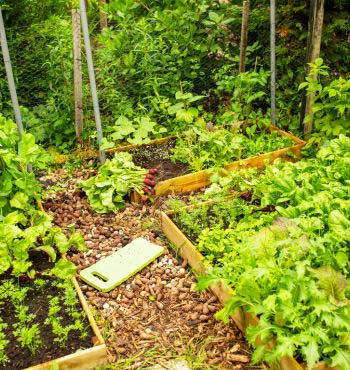
Discover the art of designing your birdies raised bed garden, creating a thriving space for your plants and vegetables. With sturdy and versatile Birdies raised beds, unleash your creativity and enjoy the benefits of elevated gardening.
Designing a Birdies raised bed garden is an exciting and fulfilling endeavor that allows you to create your own little oasis of plants and vegetables. By following a few simple steps, you can ensure that your garden not only looks beautiful but also thrives with healthy and abundant crops. In this article, we will explore three key aspects of designing your Birdies raised bed garden: determining the size and shape, optimizing soil and drainage, and arranging plantings for maximum yield.
Determining The Size And Shape
When it comes to designing your Birdies raised bed garden, one of the first decisions you’ll need to make is determining the size and shape of your beds. The great thing about Birdies raised beds is their versatility, allowing you to customize the dimensions to perfectly fit your available space and gardening preferences. Whether you envision a small and compact garden or a sprawling oasis, Birdies raised beds can be tailored to suit your needs.
To determine the size and shape of your raised bed, start by evaluating the available space in your yard. Consider factors such as the amount of sunlight, proximity to water sources, and any existing landscaping features. Once you have a clear understanding of your space limitations, you can decide on the ideal dimensions of your raised beds. Keep in mind that walkways between the beds should be wide enough to provide easy access for maintenance and harvesting.
Optimizing Soil And Drainage
Optimizing the soil quality and drainage is crucial for the success of your Birdies raised bed garden. Poor soil quality can hinder plant growth and nutrient absorption, while inadequate drainage can lead to waterlogging and root rot. To create an optimal growing environment, follow these steps:
- Start by ensuring that your raised beds are filled with high-quality organic soil. This will provide the essential nutrients that your plants need to thrive.
- Consider conducting a soil test to determine any deficiencies or imbalances in pH levels.
- Amend the soil as necessary by adding compost, organic matter, or soil conditioners to improve its texture and fertility.
- Enhance drainage by placing a layer of gravel or coarse sand at the bottom of your raised bed before adding the soil. This will prevent water from pooling and ensure proper drainage.
Arranging Plantings For Maximum Yield
Arranging your plantings in a strategic manner can maximize your garden’s yield and create an aesthetically pleasing arrangement. Consider the following tips:
- Plan your garden layout based on the sunlight requirements of your plants. Place taller plants on the northern side of your raised beds to avoid shading smaller or sun-loving plants.
- Group plants with similar water and nutrient needs together to make watering and fertilizing more efficient.
- Utilize companion planting techniques to enhance pollination, deter pests, and improve overall plant health.
- Consider the growth habits of your plants when arranging them. Place trailing or vining plants near the edges of your raised beds to allow them to spill over and create a visually appealing display.
By applying these design principles to your Birdies raised bed garden, you’ll create a harmonious and productive space that will delight both your eyes and taste buds. So let your creativity flow and start designing your dream garden!
Plant Selection And Care
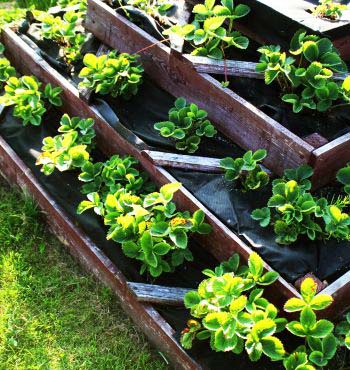
Choosing the right plants for your Birdies Raised Beds is key to ensuring a successful and healthy garden. By selecting suitable plants, implementing crop rotation, and using proper watering and fertilizing techniques, you can maximize your garden’s productivity and reap the rewards of a thriving garden. Let’s dive into the details of each aspect.
Choosing Suitable Plants
When it comes to selecting plants for your Birdies Raised Beds, it’s important to consider their adaptability to the local climate and the size of your raised bed. Not all plants thrive in every climate, so it’s essential to choose varieties that are well-suited to your specific region. Before making your selections, consult local gardening resources or check with a nearby nursery to ensure your chosen plants will thrive in your area.
Additionally, take into account the size of your raised bed. Some plants require more space to grow and spread out, while others can thrive in more compact settings. Consider the mature size of the plants you wish to grow and plan accordingly. Providing enough space for each plant will prevent overcrowding and ensure optimal growth.
Implementing Crop Rotation
Crop rotation is a technique that involves changing the location of crops in your raised beds each season. This practice helps prevent the buildup of pests and diseases, improves soil fertility, and promotes overall plant health. By rotating crops, you can reduce the likelihood of plant-specific pests and diseases thriving in your garden bed.
When implementing crop rotation, it’s essential to group related plant families together and avoid planting the same crop in the same location year after year. For example, if you grew tomatoes in one raised bed last season, consider planting a different family of plants, such as leafy greens, in that bed the next season. This rotation will help break the disease and pest cycles, leading to healthier plants in the long run.
Watering And Fertilizing Techniques
Proper watering and fertilizing are crucial components of plant care in your Birdies Raised Beds. Watering your plants adequately ensures their hydration and promotes growth. While the water requirements may vary depending on the plant species, a general rule is to water deeply and less frequently rather than shallowly and frequently. This encourages the development of a robust root system.
When it comes to fertilizing, using organic matter such as compost can provide essential nutrients while enhancing soil fertility. Applying a layer of compost to the topsoil of your raised beds before planting can help enrich the soil and support healthy plant growth. Additionally, consider using organic liquid fertilizers throughout the growing season to provide extra nourishment as needed.
Remember to follow the instructions on your chosen fertilizer products and avoid over-fertilizing, as this can harm your plants rather than benefit them.
Managing Pest And Weed Control
Keeping pests and weeds under control is crucial for the health and productivity of your garden. Birdies Raised Beds provide an ideal solution for managing these issues effectively. In this blog post, we will explore preventive measures, natural pest control methods, and weed management strategies that can help you maintain a thriving and bountiful garden.
Preventive Measures
To minimize the presence of pests and weeds in your garden, it’s essential to implement preventive measures. By taking proactive steps, you can create an environment that discourages their growth and infestation.
- Start by selecting high-quality soil and using organic compost to enhance its fertility. This not only promotes healthy plant growth but also reduces the chances of weed invasion.
- Regularly inspect your raised beds for signs of damage or vulnerability that may attract pests. Repair any cracks or gaps to prevent them from entering.
- Implement companion planting, which involves growing certain plants together that naturally repel pests or attract beneficial insects. For instance, marigold flowers act as a natural deterrent for harmful nematodes.
- Consider installing physical barriers such as netting or fencing to protect your garden from pests like birds, rabbits, or rodents.
- Maintain good hygiene practices by removing fallen leaves, weeds, and debris that can provide hiding places for pests.
Natural Pest Control Methods
If preventive measures alone aren’t sufficient, you can turn to natural pest control methods that are safe for your plants, wildlife, and the environment. These methods effectively minimize pest populations without the use of harmful chemicals.
- Encourage natural predators such as ladybugs, lacewings, or birds to visit your garden by providing them with suitable habitats like birdhouses or insect hotels.
- Utilize organic insecticides or homemade herbal sprays derived from plants like neem, garlic, or chili peppers. These natural alternatives effectively repel or control pests.
- Employ traps or barriers like sticky traps or beer traps to catch and remove specific types of pests.
- Practice companion planting with pest-repellent herbs such as basil, thyme, or rosemary, which naturally deter insects.
Weed Management Strategies
Weeds can compete with your plants for valuable nutrients, sunlight, and water. Implementing effective weed management strategies will help maintain the health and prosperity of your garden.
| Methods | Benefits |
| Mulching | Reduce weed growth by blocking sunlight and providing insulation. |
| Hand Pulling | Remove weeds manually, ensuring they’re uprooted entirely. |
| Flame Weeding | Use controlled flame to kill weeds without the need for herbicides. |
| Vinegar Solution | Apply a mixture of vinegar and water to kill weeds naturally. |
By adopting a combination of these weed management strategies, you can keep pesky weeds at bay and provide your plants with the optimal growing conditions they need to flourish.
Seasonal Maintenance And Succession Planting
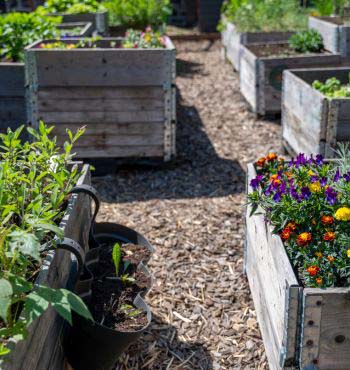
One of the keys to a successful and bountiful garden is regular maintenance and proper planning. By staying ahead of the seasonal changes and implementing succession planting techniques, you can maximize your Birdies Raised Beds’ potential and enjoy a continuous harvest throughout the year. In this blog post, we will discuss the necessary steps for preparing your raised beds for winter, planning for spring, and extending the growing season.
Preparing For Winter
As the colder months approach, it’s essential to prepare your Birdies Raised Beds for winter. This involves several crucial tasks:
- Cleaning up: Remove any remaining plant debris, weeds, and fallen leaves to minimize the risk of pests and diseases.
- Protecting the soil: Apply a layer of organic mulch to maintain soil moisture and temperature, preventing erosion and nutrient loss.
- Covering the beds: Use frost blankets or row covers to protect your plants from freezing temperatures and frost damage.
Planning For Spring
Spring is a time of renewal and growth, and careful planning will set the stage for a successful gardening season. Here are some essential steps to take:
- Soil preparation: Loosen and amend the soil with organic matter, such as compost, to improve drainage and fertility.
- Selecting varieties: Research and choose the appropriate plant varieties that thrive in your specific climate and meet your preferences.
- Creating a planting schedule: Have a timeline in place for starting seeds indoors, transplanting seedlings, and direct sowing for a continuous harvest.
Extending The Growing Season
With the right techniques, you can extend the growing season and enjoy fresh produce for longer periods. Consider implementing the following methods:
- Using season extenders: Install cold frames, cloches, or mini-greenhouses to protect your plants from adverse weather conditions and prolong the harvest.
- Succession planting: This strategy involves planting new crops as soon as the previous ones are harvested, ensuring a constant supply of fresh vegetables.
- Choosing cold-tolerant plants: Select crops such as kale, spinach, and certain varieties of lettuce that can withstand chilly temperatures.
By prioritizing seasonal maintenance and employing succession planting techniques, you’ll optimize your Birdies Raised Beds and reap the rewards of a productive garden throughout the year. Whether you’re a beginner or an experienced gardener, these practices will help you make the most of your raised beds.
Tips For Maximized Production
If you want to reap a bountiful harvest from your Birdies raised beds, maximizing production should be your top priority. To help you achieve this goal, we have compiled some valuable tips and techniques that will make your garden thrive. Whether you are a seasoned gardener or just starting out, incorporating these strategies will ensure that you get the most out of your raised beds and enjoy a successful growing season.
Utilizing Companion Planting
Companion planting is an essential technique to optimize your garden’s productivity. By planting compatible crops together, you can enhance pest control, attract beneficial insects, maximize space, and encourage healthy growth. Take advantage of companion planting by grouping plants that have mutually beneficial relationships. For example, pairing tomatoes with basil not only deters pests but also improves flavor. Similarly, interplanting beans with corn provides natural support while enriching the soil with nitrogen.
Intensive Gardening Techniques
To make the most of your Birdies raised beds, adopting intensive gardening techniques is key. This method focuses on maximizing space and increasing yields by closely planting crops in a concentrated area. Rather than spacing plants far apart, densely planting them enables you to achieve higher productivity per square foot. Implement techniques such as square foot gardening, vertical gardening, or intercropping to maximize your bed’s potential. Remember to consider the specific needs of each plant and provide adequate spacing and nutrients accordingly.
Crop Selection For Success
Selecting the right crops for your raised beds can significantly impact your garden’s productivity. Opt for varieties that are well-suited to your climate, soil conditions, and available sunlight. Additionally, prioritize crops that are known for their high yield and quick maturity. Leafy greens like lettuce and spinach, root vegetables such as radishes and carrots, and herbs like mint and cilantro are excellent choices for raised beds. By choosing the right crops, you can ensure a successful and productive growing season.
Inspiring Raised Bed Garden Ideas
Looking for creative and inspiring raised bed garden ideas? Enter the world of Birdies Raised Beds, where functionality meets style and innovation. Discover unique ways to transform your outdoor space with these versatile and customizable beds. From vertical gardening solutions to decorative and stylish designs, Birdies Raised Beds offers a wide range of options to help you create a beautiful and productive garden.
Vertical Gardening Solutions
Maximize your gardening space with Birdies Raised Beds’ vertical gardening solutions. Perfect for small yards or balconies, these beds make use of vertical space by allowing you to grow plants upwards. Whether you want to grow herbs, flowers, or even vegetables, a vertical garden can be a practical and visually appealing addition to your outdoor space. Arrange your plants in tiers or use trellises and stakes to create a stunning vertical display.
Decorative And Stylish Designs
Elevate the aesthetics of your garden with Birdies Raised Beds’ decorative and stylish designs. Gone are the days of plain and boring raised beds. These beds are available in an array of colors and finishes, allowing you to choose a design that complements your outdoor decor. Whether you prefer a modern and sleek look or a rustic and natural feel, there’s a design for every taste. Make a statement with your raised beds and turn your garden into a visual masterpiece.
Unique Use Of Multiple Raised Beds
Take your garden to the next level by using multiple Birdies Raised Beds in unique and creative ways. Combine different sizes and shapes to create visually appealing layouts. Arrange them in patterns or use them to divide your garden into designated areas. With multiple raised beds, you have the freedom to experiment and let your imagination run wild. Create a stunning focal point or a harmonious garden design that is sure to impress.
Troubleshooting Common Issues
While using Birdies Raised Beds can greatly enhance your gardening experience, like any other gardening method, you may encounter a few common issues. However, there’s no need to worry! With a little understanding and some simple steps, you can quickly troubleshoot these problems and ensure your plants thrive.
Dealing With Soil Imbalances
A well-balanced soil is essential for the healthy growth of your plants. If you notice any issues such as stunted growth or yellowing leaves, it may indicate a soil imbalance. Here are some common soil imbalances and their solutions:
| Soil Imbalance | Solution |
| Acidic Soil (low pH) | Add lime or wood ash to raise the pH level. |
| Alkaline Soil (high pH) | Incorporate sulfur or organic matter like peat moss to lower the pH level. |
| Nutrient Deficiency | Use organic fertilizers or amend the soil with compost to provide the lacking nutrients. |
Addressing Watering Problems
Water is vital for the well-being of your plants, but it’s important to find the right balance. Here’s how you can address common watering problems:
- Overwatering: Excessive watering can lead to root rot and other fungal diseases. Ensure your raised bed has proper drainage, and water based on the needs of your plants.
- Underwatering: Insufficient water can cause wilting and stunted growth. Check the moisture level of the soil regularly and water your plants adequately, especially during hot and dry periods.
Identifying And Treating Plant Diseases
Plant diseases can have a significant impact on the health and productivity of your garden. By promptly identifying and treating them, you can prevent further damage. Here are some common plant diseases and their treatments:
- Powdery Mildew: A fungal disease that appears as a white, powdery coating on leaves. Treat it by applying neem oil or a fungicidal spray.
- Leaf Spot: This disease causes dark spots or blotches on the leaves. Remove infected leaves, and apply a copper-based fungicide.
- Root Rot: Overwatering can lead to root rot, which causes wilting and decayed roots. Improve drainage and avoid over-watering to prevent this disease.
By being aware of these common issues and their solutions, you can keep your Birdies Raised Beds in optimal condition and enjoy a bountiful harvest!
FAQ On Birdies Raised Beds
How Long Do Birdies Raised Beds Last?
Birdies raised beds typically last for many years due to their durable construction and high-quality materials. They are made from galvanized steel, which is resistant to rust and weathering. With proper care, these beds can withstand the elements and last for a long time.
Are Vego And Birdies The Same?
No, Vego and birdies are not the same. They are different from each other.
Where Are Birdies Garden Beds Manufactured?
Birdies garden beds are manufactured locally in the United States.
Are Birdies Garden Products Raised Garden Beds 6 In 1?
No, Birdies garden products do not have raised garden beds that are specifically 6 in 1.
Conclusion
In sum, Birdies Raised Beds offer a practical and efficient solution for every gardener. With their durable steel construction and customizable options, these raised beds provide an ideal growing environment for plants. Moreover, their easy assembly process makes them suitable for beginners and experts alike.
So why wait? Start cultivating your own lush and bountiful garden with Birdies Raised Beds today!
